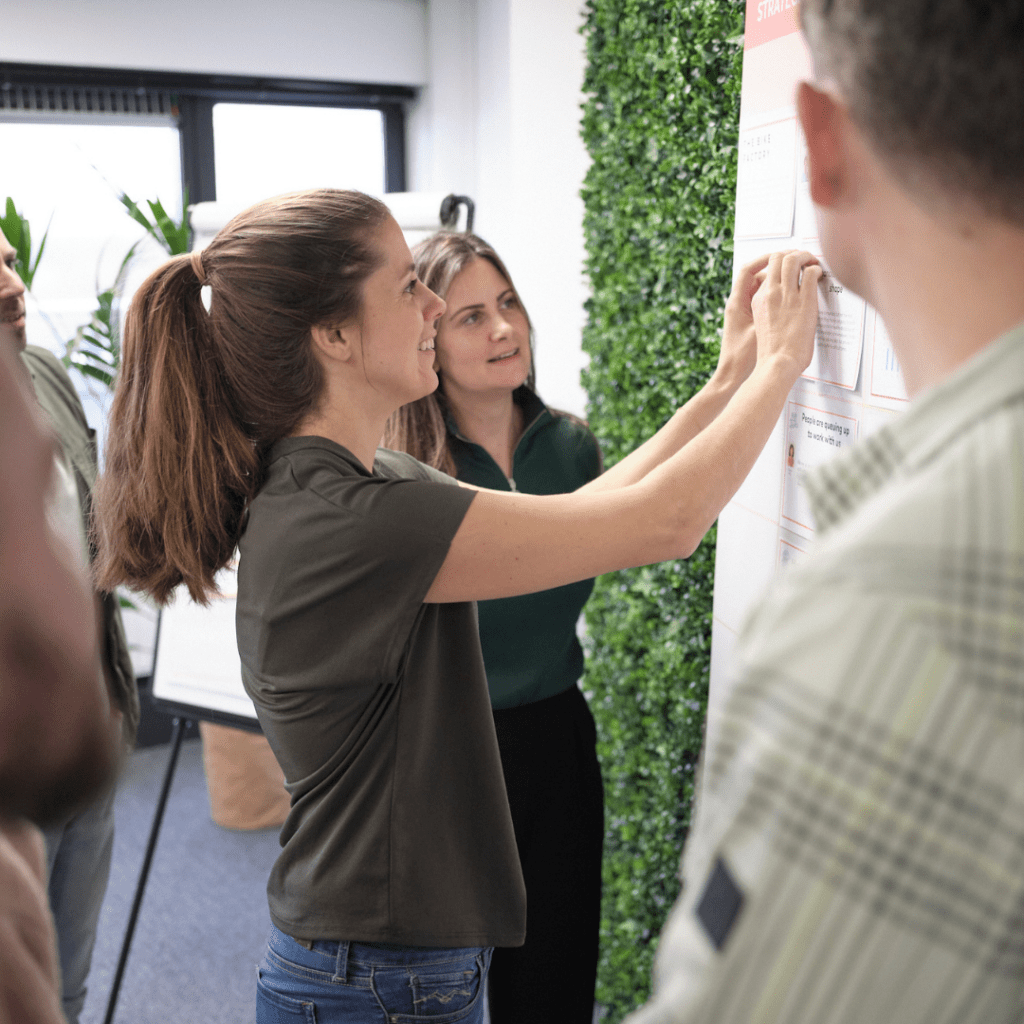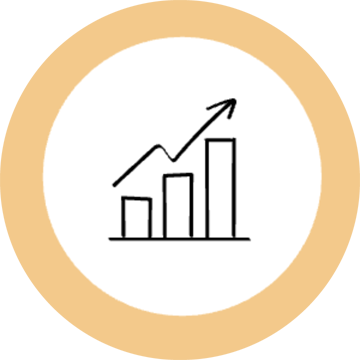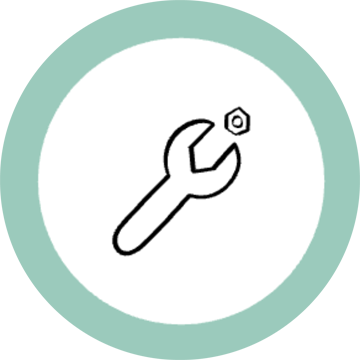What is Obeya?
Obeya, a visual management instrument, translates complexity into clarity. Everything that matters for teams to be successful is visualized in the ‘big room’, enabling teams to set goals more effectively, collaborate better, and make decisions.



Obeya
Big Room
Obeya, Japanese for ‘big room,’ is more than just a physical space; it’s a philosophy that brings teams together around common goals and enables them to function as a cohesive unit. By using visual management tools, you create a clear overview of your strategic goals and operational processes.
With all relevant information at a glance, an Obeya helps identify bottlenecks, prioritize actions, and clarify responsibilities. As a result, an Obeya fosters a culture of transparency and continuous improvement.


Where does Obeya come from?
Obeya originated at the Japanese car manufacturer Toyota in the 1990s. It was developed to streamline and improve the complex development of the Toyota Prius. In the ‘big room,’ engineers, managers, and team members came together to discuss and solve design, production, and issues in real-time. This approach led to revolutionary improvements in efficiency and effectiveness: the Prius hit the market faster than planned and at lower costs than budgeted. Now, Obeya is used worldwide in various sectors, from software development to healthcare.

“The goals set are only achievable through close collaboration, effective meetings, and rapid problem-solving.”
~ Takeshi Uchyamada
Takeshi Uchyamada
Toyota
The method
What is Leading With Obeya?
The Leading With Obeya method uses the Obeya concept specifically for leadership and management. The method combines visual management with leadership principles, enabling leaders and their teams to work together on setting, tracking, and achieving strategic goals.
A unique aspect of Leading With Obeya is the emphasis on rhythm and routine; it’s not just about the information that is made visual, but also about the regular and structured discussions that take place within the Obeya. This increases engagement and shared understanding of challenges and opportunities, ensuring that the team learns to act collectively and purposefully. Also, read the book written by Tim Wiegel, the founder of the method.

In Practice
How does Leading with Obeya work?
Leading With Obeya is a structured method. There are five core boards, each representing a crucial aspect of leadership and organizational focus:

The 5 Core Boards

Strategic Direction
This board captures the long-term vision, mission, and strategic goals of the organization.

Performance
This is where your key performance indicators (KPIs) and objectives are displayed.

Difficult Problems
Here you take a closer look at complex challenges or bottlenecks.

Plan to Value
This board shows your (future) important initiatives to create value.

Act & React
At this board, the team learns to act and react to unforeseen events.
Together
See, Learn & Act
In practice, Leading With Obeya comes to life through regular sessions where the team discusses the boards. These sessions foster a culture of transparency, shared responsibility, and continuous learning. They ensure that everyone stays focused on the common goals and that actions are aligned with the strategic direction of the organization.
Visit our boards at obeyaboards.com and download our free LWO Explainer Guide to learn more about the boards and the Leading with Obeya method.


What can Leading with Obeya do for you?
- More Overview: Reduces complexity and increases clarity, making goals, progress, and performance clearer.
- Clear Priorities: Simple visualization of priorities and dependencies leads to faster decision-making.
- More Productive Meetings: Saves time with shorter but more effective meetings. Tasks and responsibilities are clearly defined.
- Increased Collaboration: Breaks down silos and promotes teamwork across departments.
- Focus on Proactive Solutions: Reduces fire-fighting by proactively addressing problems.

